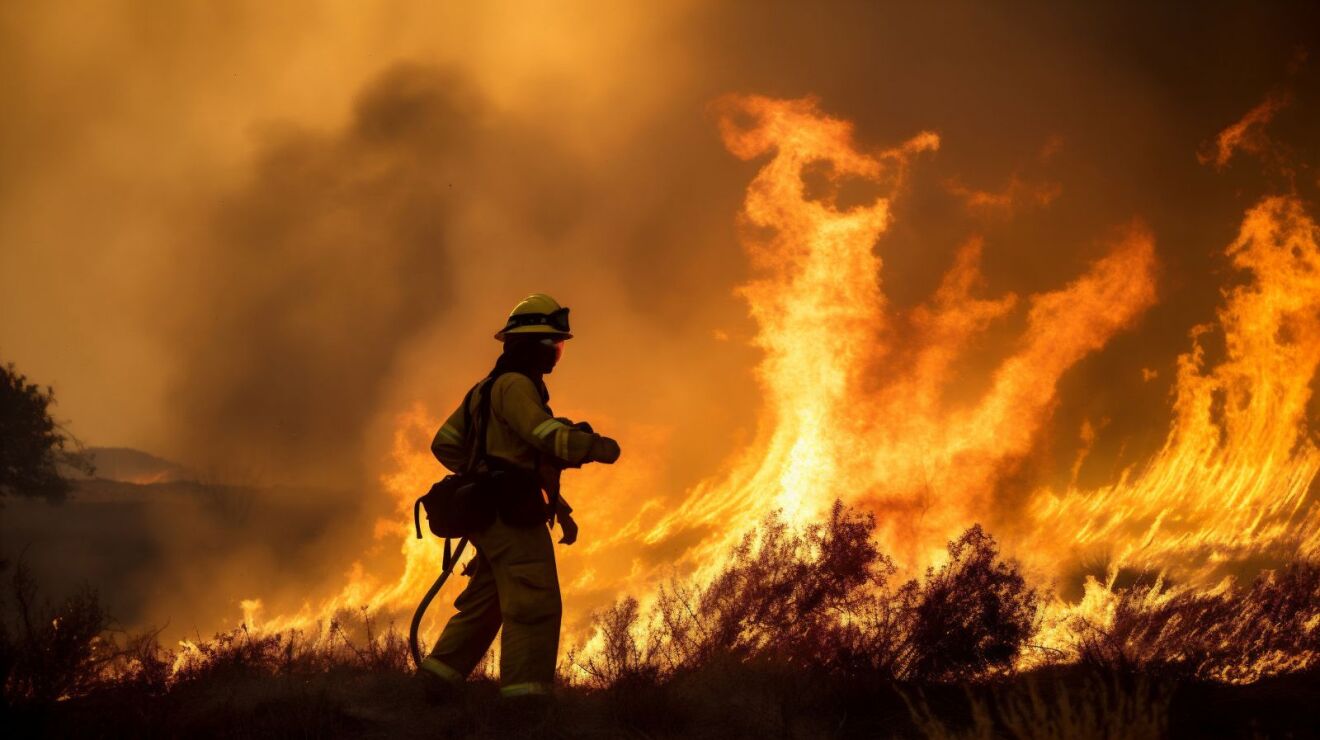From the dense forests of British Columbia to the rugged coasts of Newfoundland, wildfires are sweeping across Canada at an unprecedented rate. Over 7.8 million hectares have burned, making 2025 the country's second-worst wildfire season on record. Thousands have been forced to evacuate their homes, while millions of Canadians are struggling with poor air quality from smoke-filled skies.
As climate change fuels longer and more intense fire seasons, artificial intelligence (AI) is emerging as a powerful ally in Canada's fight against this growing threat.
Organizations across the country are adding it to their arsenal to protect communities and the firefighters who defend them. And more Canadian innovations are at the forefront of trying to protect those at the centre of the firefighting.
Continue reading to discover technology's increasing role in the fight against wildfires.
Precision Aerial Firefighting With AI Edge Computing
While helicopters have always been key in the fight against wildfires, very few of them are equipped with advanced technology to assist aircrews and provide intelligence to decision makers. Founded in 2023, by a former helicopter pilot and industry professionals, Voxelis.AI is a Vancouver-based company transforming aerial firefighting. The company develops helicopter-mounted AI systems to optimize aerial firefighting operations.
Under challenging and volatile conditions with high winds and low visibility, Voxelis’ low-cost VoxVision system equips helicopters with real-time thermal scanning, mapping, and environmental monitoring capabilities using AWS AI and Internet of Things (IoT) edge computing. The device automatically records temperature, pressure, and smoke data, allowing teams in the air, and on the ground, to quickly develop an effective fire suppression strategy. With the system’s predictive capabilities for fire trajectory, teams can also plan where they will need to set up next.
This smart device also organizes data automatically with time and location stamps, and ensures communication between all parties, enabling agencies, operators, and helicopter fleets to work as a united and coordinated front against these natural disasters—strengthening the chances of success.
Protecting Those Who Protect Us
On the ground, firefighters face major health risks, with prolonged exposure to smoke and toxins putting them at increased risk of developing cancer and respiratory problems.

To limit exposure and help reduce the effects of thermal and chemical stress, Kyndryl has developed an innovative IoT solution—a wearable device equipped with sensors to monitor firefighters’ vital signs, toxin exposure and environmental factors like humidity levels, in real-time. This technology runs on the AWS Cloud and relies on its high-performance global infrastructure network to ensure resilient, rapid information transmission.
Kyndryl’s wearable enables immediate intervention in case of danger and optimizes team rotation. The solution also provides valuable data to help develop personalized healthcare management strategies for individual firefighters and ultimately protects those who risk their lives to protect us.
When It’s Time to Evacuate, Coordinated Communications Are Key
When fires force communities to leave their homes, authorities handling evacuations face a series of unique challenges. From monitoring a constantly changing threat, to sharing accurate information, and ensuring all teams involved are working together—resilient, secure, and coordinated communications are essential to ensure these are orchestrated safely.

With its ability to break down communication silos and ensure information is transmitted, even when systems are down, BlackBerry® AtHoc ® is transforming emergency management.
The system instantly broadcasts geolocated alerts, coordinates response teams, and informs citizens in real-time. With BlackBerry AtHoc, public safety agencies like the Saskatchewan Public Safety Agency, can quickly establish and maintain crisis communication capabilities, and access the best available tools to protect the public as effectively, quickly, and safely as possible during these fast-moving events.
Transforming Crisis into a Driver of Progress
Wildfires continue to become an even greater risk, as climate change extends the fire season and increases their frequency. However, companies like Voxelis.AI, BlackBerry and Kyndryl are harnessing AWS technology to transform how we tackle and respond to natural disasters. They are embracing them as a tool to better protect citizens, firefighters, and the natural environment in our changing world.
And today, with two data centre campuses—the AWS Canada (Central) Region and the AWS Canada West (Calgary) Region–in a country as vast as Canada, organizations can count on resilient services, with a reduced latency, that optimizes the information chain, which is crucial in all emergency situations.
Find out how drones and AI are helping fight wildfires around the world here.












